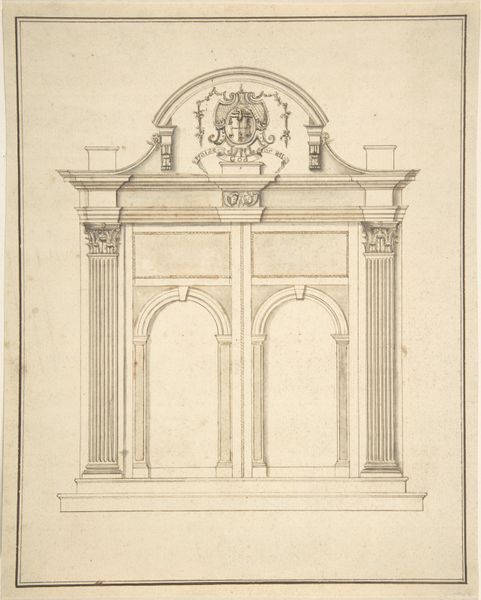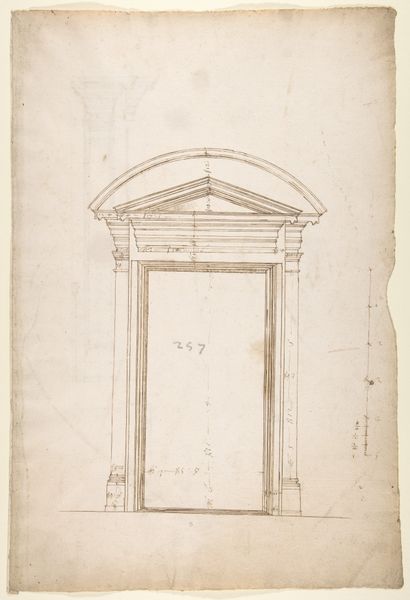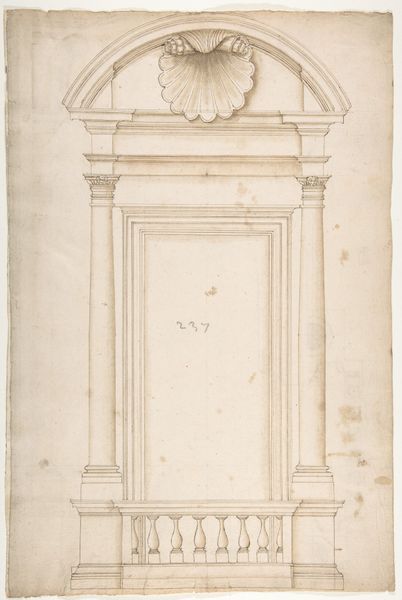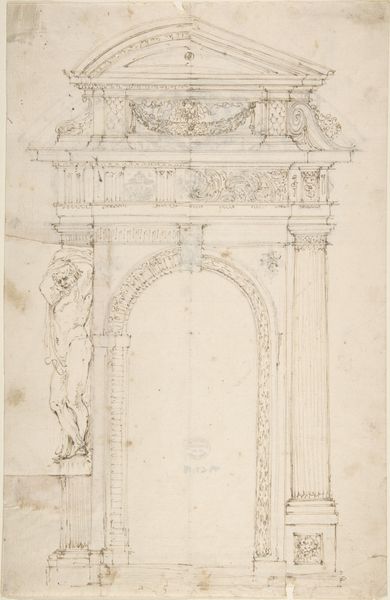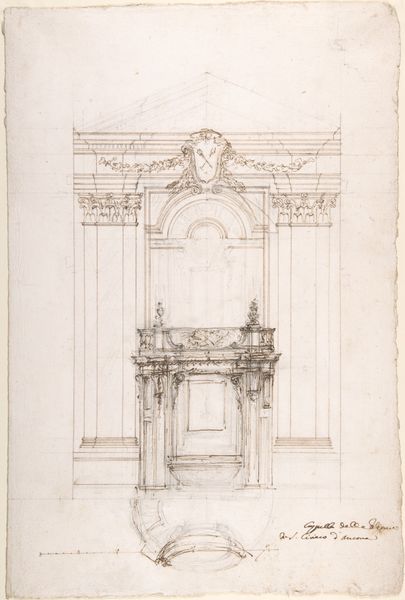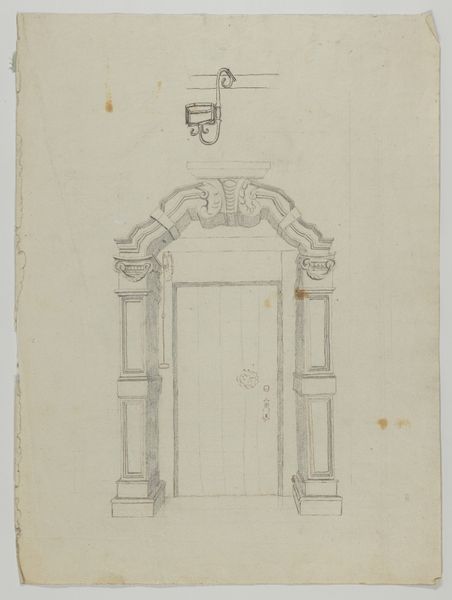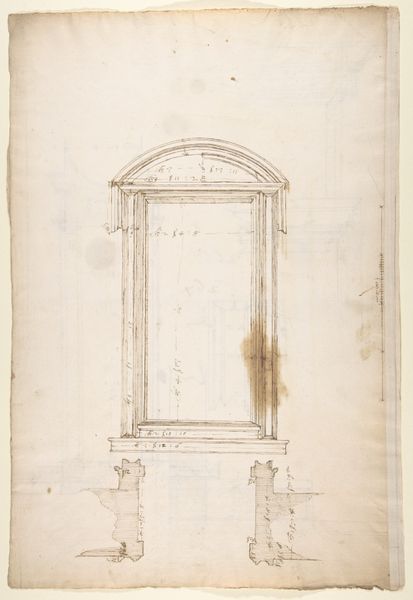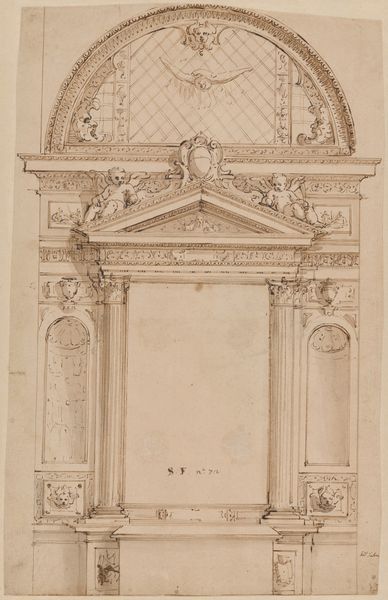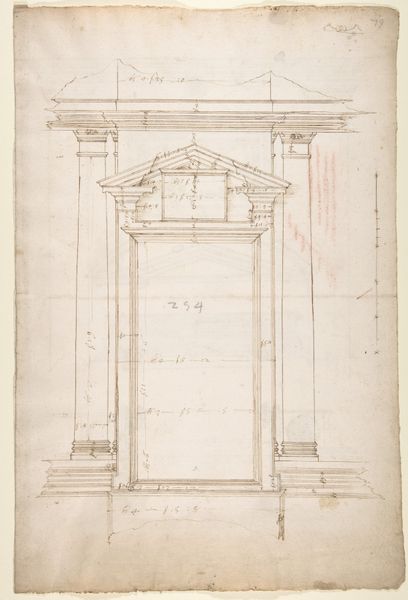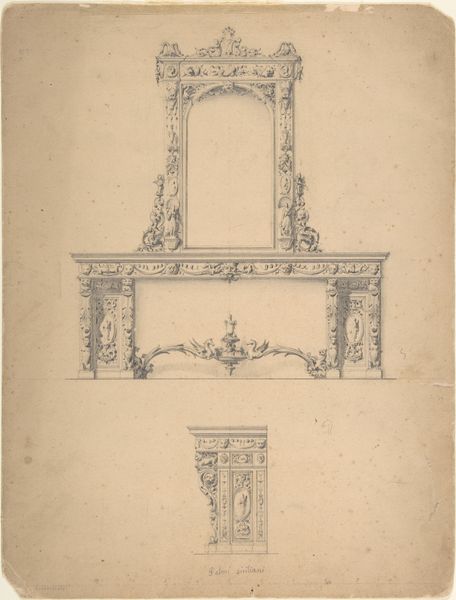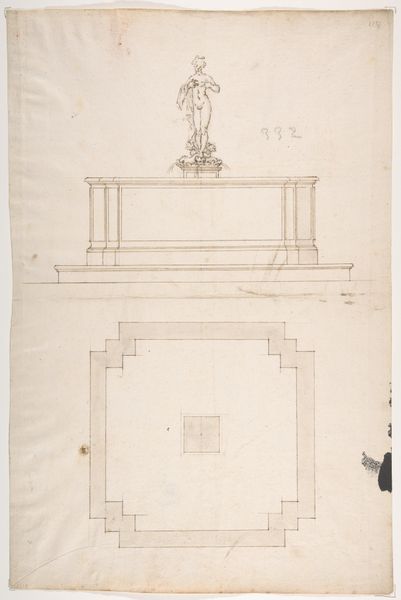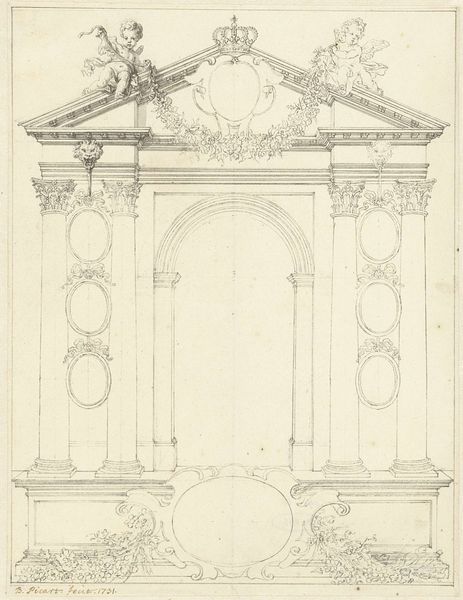
drawing, print, architecture
#
drawing
# print
#
form
#
11_renaissance
#
geometric
#
line
#
architecture
Dimensions: sheet: 13 11/16 x 9 3/8 in. (34.8 x 23.8 cm)
Copyright: Public Domain
Editor: This is "Design for a Wall Tomb," a 16th-century drawing of architecture. It seems pretty formal. It makes me think about monuments and remembrance, but in a very staged and designed way. What do you make of it? Curator: It is indeed a fascinating reflection of its time. Notice how the tomb design employs classical architectural elements - columns, arches, and decorative carvings? During the Renaissance, there was a real resurgence of interest in classical antiquity, which dramatically influenced artistic and architectural styles. In whose image, and with what purposes in mind, are these public facing symbols displayed? Editor: So, this isn't just about aesthetics, but about using visual language to communicate certain ideas about the person being memorialized? Curator: Precisely! This drawing speaks to how power and status were visually constructed. Consider the tomb's intended location. Would it have been placed in a prominent public space like a church, or within a private family chapel? How might location impact our understanding of its purpose? Editor: A public space would definitely make it about a wider audience, solidifying the family's status in the community, wouldn't it? Curator: Exactly! The Renaissance saw the rise of powerful families who used art as a way to legitimize and broadcast their power. Tombs became statements, showcasing wealth and lineage through carefully chosen iconography. Editor: It's incredible to think about how something like tomb design could be so politically charged! I will definitely consider placement more critically from now on. Curator: Art, even something seemingly simple, never exists in a vacuum, right? And recognizing those underlying societal narratives can enrich our understanding so profoundly.
Comments
No comments
Be the first to comment and join the conversation on the ultimate creative platform.
